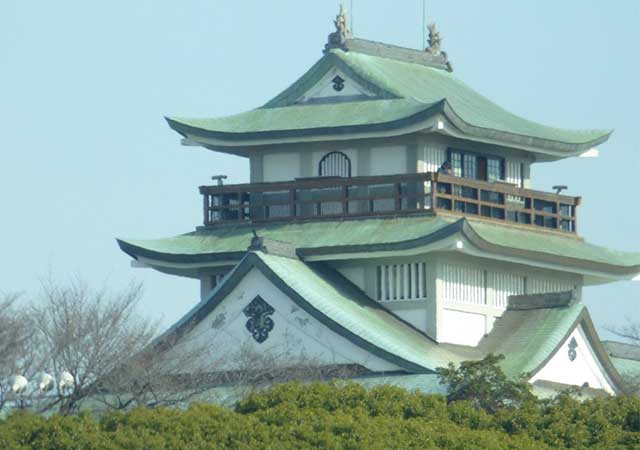
Komaki Castle, properly known as Komakiyama Castle, was constructed in 1563 during the warlord Oda Nobunaga’s expansionist efforts. His goal was to defeat the neighboring warlord, Saito Tatsuoki, and take the province of Mino (now Gifu Prefecture). Oda Nobunaga, a military genius, recognized the importance of relocating to key strategic positions to expand his territories. For over ten years, Nobunaga had been based at the strategically important Kiyosu Castle in modern-day Aichi Prefecture. With his sights set on Mino, he chose to move his base of operations to a more northerly location.
According to legend, Nobunaga foresaw that his generals would resist relocating far from their established homes around Kiyosu. To address this, he first suggested building the new castle atop the distant and very steep 293-meter-high Mt. Ninomiya near Inuyama. As expected, his men balked at the idea, so he proposed the closer, lower, and more convenient Mt. Komaki instead. Unable to refuse their lord a second time, they agreed on Komaki.
The position of Komaki was ideal. Situated on top of an 86-meter-high hill, it provided an unhindered view across the vast Nobi Plain and surrounding areas, and it was surrounded by a small river that supplied water. Its proximity to Mino would also serve to psychologically unsettle the enemy.
Although Nobunaga only used the castle for four years, it appears he had intended to be based in Komaki much longer. The castle was very well designed, with many innovative features. It served as a template for Nobunaga’s most superb castle at Azuchi, constructed 13 years later. The designs and layout of both castles show many similarities. Recent research and excavations have revealed that Komaki was one of the earliest castles to extensively use defensive stonework, a feature that later became standard in all castles.
Of particular note were the large rocks stacked in three concentric rows around the top of the mountain. The upper ring surrounding the central bailey stood 3-4 meters high, while the middle and lowest rings were both about 2 meters high. One large rock weighing 190 kg was found with the name "Sakuma" written in sumi ink, believed to be that of an Oda samurai tasked with constructing the castle walls. This is the oldest known marking on an ishigaki (stone wall). Since that discovery, all stones unearthed at the site have been carefully washed and inspected for more brush marks.
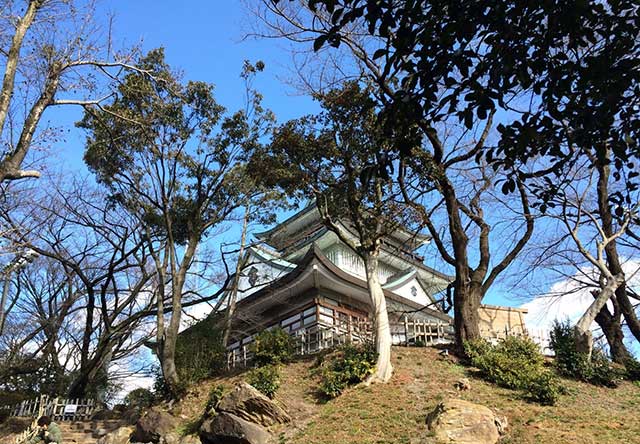
Aside from the stone walls, the castle featured a 5.5-meter-wide Otemichi, a main path leading straight up the mountain. Nobunaga positioned the homes of his top retainers along either side of this path, ensuring that all his men were central to his needs. This feature was also seen at Azuchi years later.
Komaki was also Japan's first castle to feature a specially constructed Jokamachi (castle town) laid out below it. Partially defended by surrounding moats and 2-meter-high earthen walls, the town was laid out in a grid-like pattern south of the mountain. Nobunaga’s palace is believed to have stood on the flat, moat-protected precincts east of the mountain fortress. Interestingly, the layout of the castle grounds and the castle town was used again when Nobunaga built Azuchi Castle, although on a much larger and more elegant scale. Komaki was the trial, Azuchi was the perfected version.
Komaki Castle was abandoned in 1567 when Nobunaga ousted the Saito clan from what would be renamed Gifu Castle, establishing it as his new base of operations. Seventeen years later, thousands of samurai returned to Komaki for the Battle of Komaki and Nagakute. Komaki Castle didn’t see action until two years after Nobunaga’s death, when it became one of the sites of the Battle of Komaki and Nagakute in 1584. This historically important conflict initially began as a siege between the forces of Toyotomi Hideyoshi, Nobunaga’s general and successor, and Tokugawa Ieyasu, his former ally. Ieyasu set his war camp on the long-abandoned Komaki Castle site. The conflict later escalated into a full-blown battle in the Nagakute region.
The 21 hectares of tree-covered mountain are preserved as a National Historical Site. The three-story keep on top of Mt. Komaki is a 1968 concrete reconstruction, which never existed during the time of Nobunaga or Ieyasu. Although there is little information, the keep houses some interesting relics and an easy-to-understand diorama of the Battle of Komaki and Nagakute. Ongoing research means that archaeological digs are often taking place, and new gates, paths, stone walls, and details are continually being discovered at the innovative Komakiyama Castle.
See also
-
Kokura Castle
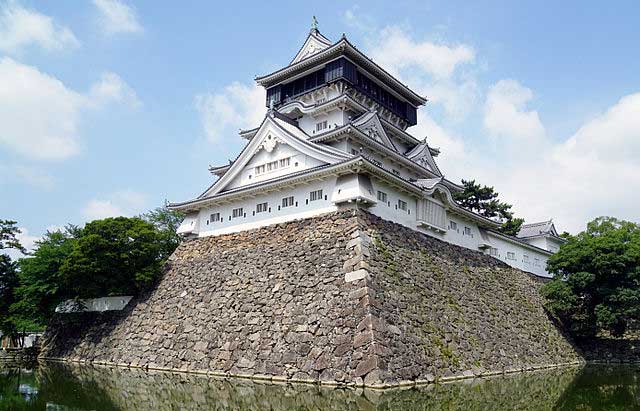
Kokura Castle is traditionally considered to have been founded by Hosokawa Tadaoki (1563–1645), although by the time the Hosokawa clan came to control these lands, the fortification had already existed since at least 1569 and was most likely built by members of the Mori clan.
-
Ikeda Castle
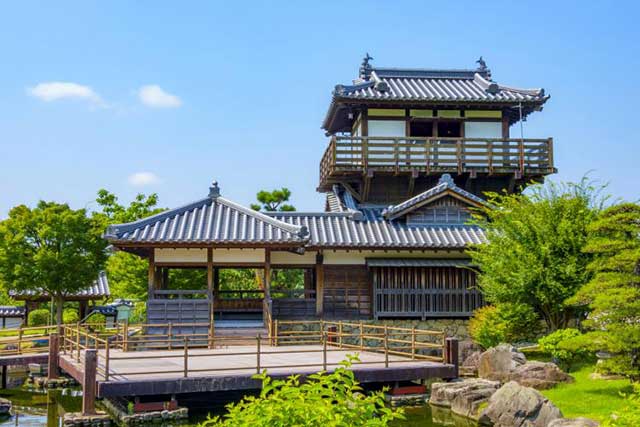
In 1334, Ikeda Noriyoshi built a small fort on this site, which over time was repeatedly expanded and rebuilt. During the Ōnin War of 1467–1477, the Ikeda clan supported the Western Coalition. As a result, Ikeda Castle was attacked and captured by the forces of the Eastern Coalition, but it was soon recaptured, allowing it to avoid serious destruction.
-
Aizu-Wakamatsu Castle
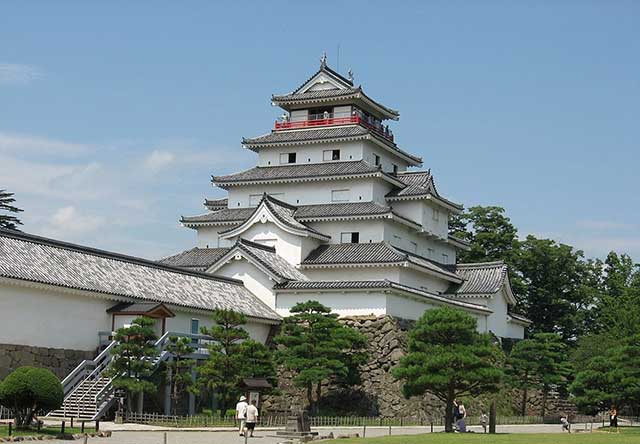
Aizu-Wakamatsu is the most powerful and at the same time the oldest castle in the Tōhoku region in the north of Honshu Island. Its history begins in the 14th century and is closely connected with the Ashina clan, whose members claimed descent from the legendary Taira family.
-
Maruoka Castle
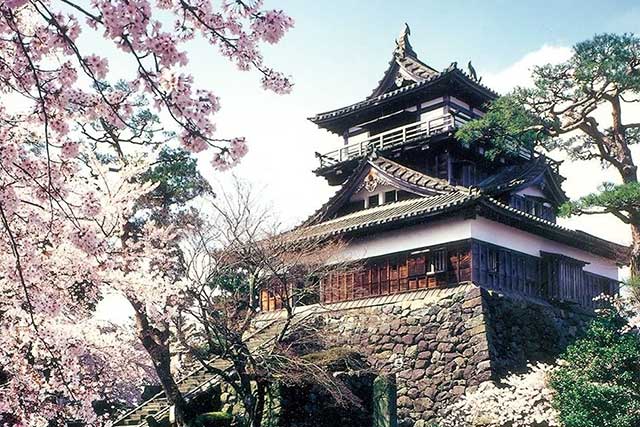
Maruoka Castle is located in the central part of the former city of Maruoka, which is now part of the city of Sakai. This area lies in the northeastern part of Fukui Prefecture. The castle was built on the bank of the Kuzuryu River, on the side opposite Fukui City, which once served as the administrative center of the former Echizen Province. Thanks to its location, Maruoka held significant strategic importance, as it controlled two major routes at once: the Hokurikudo highway leading from Kaga Province and the Mino Kaido road connecting these lands with Mino Province.
-
Marugame Castle
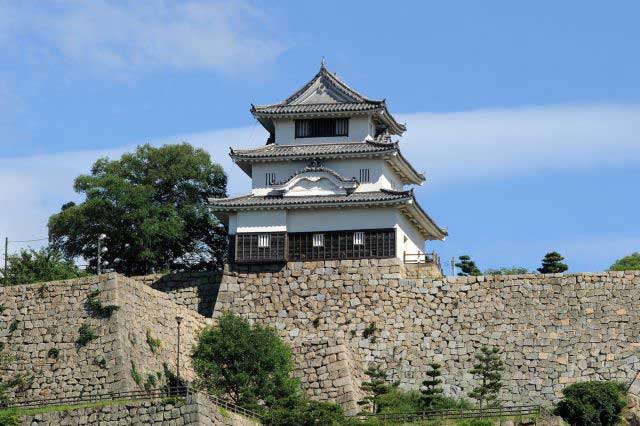
Marugame is part of the so-called “Authentic Dozen,” a group of twelve castles whose donjons have survived to the present day without major reconstructions since the Edo period.
-
Iyo Matsuyama Castle
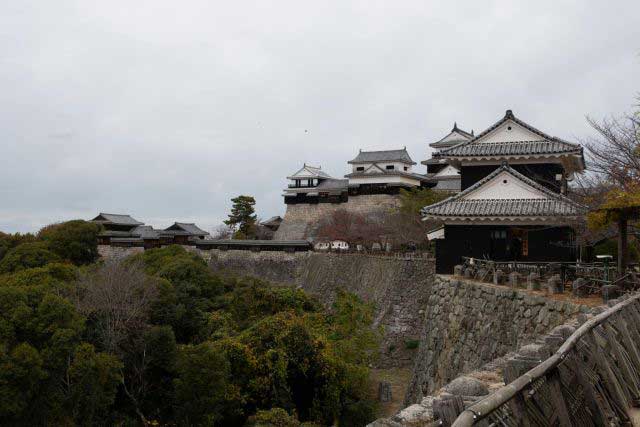
Historically, the center of Iyo Province—corresponding to today’s Ehime Prefecture on the island of Shikoku—was the city of Imabari, while the Matsuyama area was regarded as an agricultural hinterland with broad plains and low hills. During the Muromachi period, the central part of the province was governed by the Kano clan from Yuzuki Castle. With the onset of the Sengoku period, however, this clan lost its former influence and was forced to survive in the shadow of the more powerful Mori and Chōsokabe clans. After Toyotomi Hideyoshi’s forces conquered Shikoku in 1587, the northern part of Iyo Province was granted to Fukushima Masanori, one of the so-called “Seven Spears of Shizugatake.” In 1595, Masanori was transferred to Kiyosu Castle, and the lands around Matsuyama were given to another of the Seven Spears, Katō Yoshiaki, who received Masaki Castle and an income of 60,000 koku of rice.
-
Kanazawa Castle
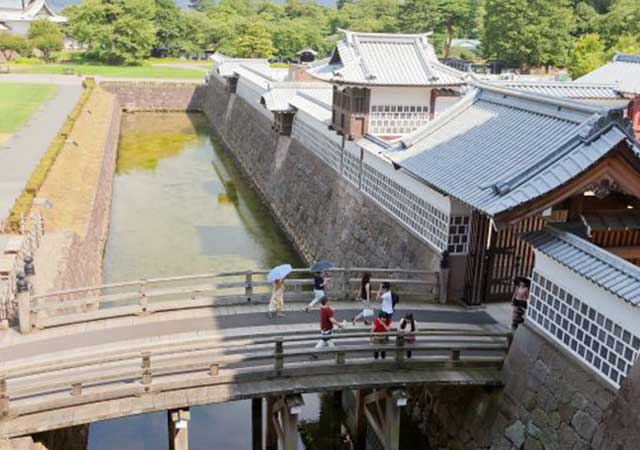
Construction of Kanazawa Castle began in 1580 on the orders of Sakuma Morimasa, a vassal of Oda Nobunaga. The castle was built on the site of the Ikko-ikki sect's Oyama Gobo temple, which is why it is sometimes called Oyama Castle. Morimasa managed to build several moats and begin construction of a castle town. However, after his defeat at the Battle of Shizugatake in 1583, he was executed, and ownership of the castle passed to Maeda Toshiie (1538–1599).
-
Nakatsu Castle
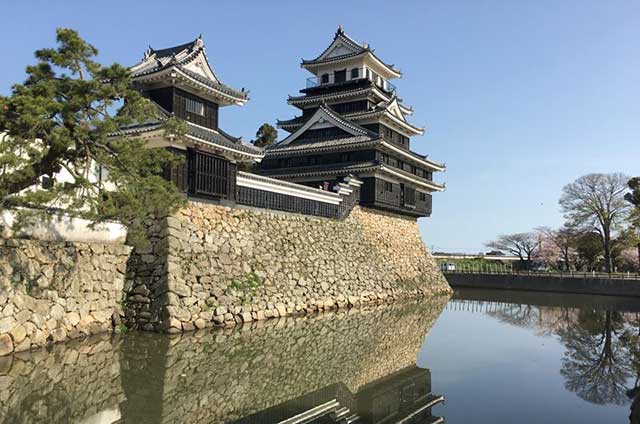
Kuroda Yoshitaka (1546–1604) was one of the closest advisors to the legendary military commander Toyotomi Hideyoshi. He took part in key military campaigns of the late 16th century, including the campaign against Shikoku in 1585 and the campaign against Kyushu in 1587. Later, during the second campaign in Korea, Yoshitaka served as chief advisor to the commander of the invasion forces, Kobayakawa Hideaki. After Hideyoshi's death, he swore allegiance to Tokugawa Ieyasu, thereby securing his influence and patronage under Japan's new leader.

